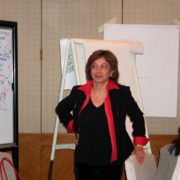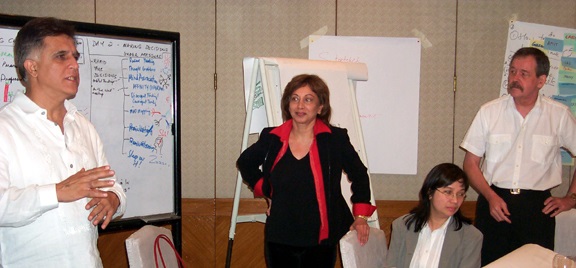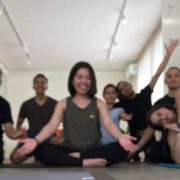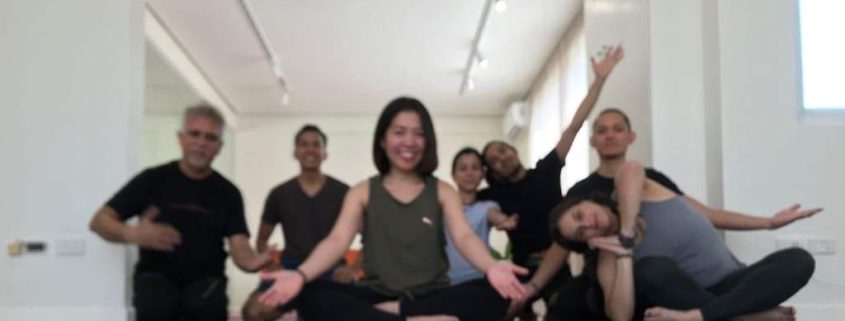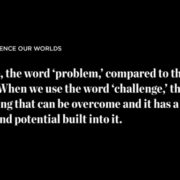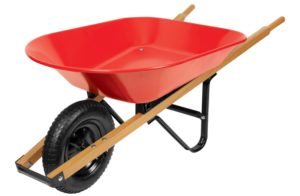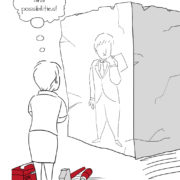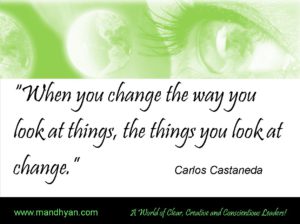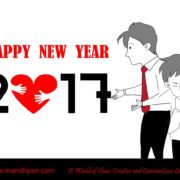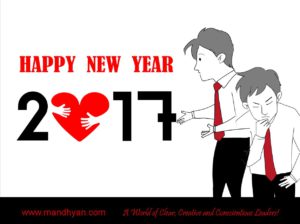How Not To Regret Past Choices
Man is stuck in a steel-walled room where the walls are closing in on him swiftly. In a matter of minutes, he is bound to be crushed to death. There is no escape. There is no way out and nobody will come for him. He has pushed, pulled, kicked, banged the walls, and shouted out his lungs. Nothing happened. Death is inevitable!
Then suddenly three doors, simultaneously, begin to slide open in front of him. Through the first one he gets a peep at ferocious beasts scrambling to get at him. Through the second one he gets to peep at snakes, scorpions, and other fanged reptiles trying to creep into the room. And, through the third one he notices piles of yucky garbage pouring in from all sides. Meanwhile, the steel walls are still inching in towards him dangerously.
He does his math and leaps into the door that has loads and loads of yucky garbage pouring in from all sides. He is free. He outwitted sure death and oblivion. Thrilled at his choice and his decision-making abilities he, happily, begins to wade through the garbage hoping to find light and freedom.
Hours and, maybe, days go by and the man is still battling his way through the smells, the filth, and the sickness. Soon his spirits begin to drop and he begins to start cursing his luck, his circumstances and spirals down into regret and unhappiness.
Given the resources, at a certain slice in time, we make the best possible choices we can. At the first instant we thrill at the choices we may have made and then atrophy sets in. We begin to regret choices and circumstances totally forgetting the context and the chance moment that influenced the choices we made.
People do this at work, in life when it comes to making decisions about our health, wealth, and relationships. We hang on to the content and, slowly but steadily, let the context dissipate and fade away into the ether. Sometimes, we even blame and are bitter about the person that may have been a guardian or a guide to the doorway that opened up to that garbage street.
And, I am not not guilty of this habit myself. Oftentimes, I find myself lost in reverie thinking about why I chose what I chose to say, do or be. An example is that moving from high school into college, I chose to study engineering even though my heart was in the arts and letters. Studying to be an engineer assured me of a job given that my family needed support. Taking up the arts only assured pleasure and joy. Today, decades later, I am in a way involved in the arts that is because my needs to survive and be safe are not as demanding as they were back in the day.
Thankfully, over the years I have learned how to quickly snap out of that reverie and get realistic not just about the past, but also about the present and the future. This does not mean crossing out using my failures as feedback. Well, as we all say it now, not ‘feedback’ but it is ‘feed forward’ for me.
How exactly do I do it?
Well, our mind is a little crazy, and a little biased when it comes to recalling life incidents. It justifies our actions and our choices in the way it prefers to and then influences us to repeat and rerun its edited version of reality such that over time we forget and forego of the edits and get completely indulged in self-created fiction.
What I do is that I take a drive down memory lane and regurgitate several other facts of that moment or period of time when I took that life-impacting decision. So there were these three influences that tipped me over into becoming an engineer instead of an artist of some kind.
One, the family needed some financial support and quick. Dad had suffered a stroke and Mom had rheumatoid arthritis for years. I felt responsible and I took the route that would increase my chances of getting a job quickly and fetch me a better dollar than that earned by artists and poets at that time. Actually, the poets and the artists at time did not even get jobs flipping burgers because there were no burger stands in India of that time.
Two, my maternal uncle who had dropped out of an arts college, put up an engineering company serving the needs of cinema halls in a rapidly growing movie industry in India of the seventies and eighties. His business was doing really good and he had flashed some of the cheques that he would pick up from his contractual work. Being of a very impressionable age, the amounts scrawled on those cheques would make my jaws plunge.
Three, I had scored really good at high school and the numbers on my report card were more befitting towards working towards being an engineer than towards being a dream-ridden artist. I gave in to peer pressure. Well, I did say, I was of an impressionable age then.
There! Uploading of such relevant and objective facts about a period in our lives when we make life-impacting decisions helps us get a perspective, become objective and learn to accept and be accountable for the choices in life we make.
The same strategy of looking back at many other, big and small, life choices helps to accept the current consequences with dignity and grace. This is being accountable to yourself about your own life. It is about not letting context wash away and clinging on to just the cold content of things.
Yes, it works and it helps improve my lot a lot. I would like you to think about this. From within this framework look at your lives: your marriage, your career, your business, and all other decisions you make in life. Remember these words that given the internal and external resources we have at a given moment; we make the best possible choices.
Living out this philosophy will never make things go back and straighten them out. Turning this philosophy a regular practice will not reduce the ups and downs of life ahead but, for sure, it will dampen our habits of regretting past choices.
Take a look at that story of the man trapped in a room whose walls were closing in on him and he chose one out of the three doors that opened up to him. Think of all the times that you have been trapped in a situation where your abilities, resources, and abilities only offered you three possibilities and you chose the lesser evil. Yes, you chose it like you may have done hundreds and thousands of times before. Like you will forevermore.








